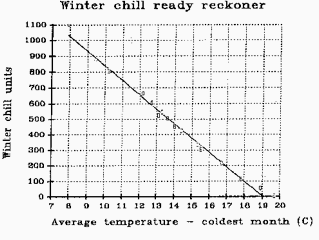Greywater as you may know is the wastewater from your shower, bath, kitchen sink, hand basins, laundry tub, washing machine and dishwasher. It doesn’t include any water from toilets. I think we are all becoming more aware of the potential ecological benefits of greywater recycling here in the Blue Mountains. Including:
▪ Water for irrigating plants and a saving on water bills
▪ Lowering fresh water extraction from ground water
▪ Stopping the extreme load of wasted water going to the Winmalee Sewage Treatment Plant and the creek line below; or just to septic tanks in areas like Medlow Bath
▪ Reduced energy use and chemical pollution from treatment
▪ Some increase nutrification into our depleted soils
▪ Recharge of our many local aquifers and endangered swamp communities
and more I’m sure…
The juggling of recycling the water from my family’s bath, shower and washing machine has taken many forms over the last 20 years, it’s not just install once and forget, when the family’s water usage changes, you want to be able to adapt. You also want to deal with nasties pragmatically. There are some chemicals its kinda hard to avoid, whether it’s the dregs of hair dyes from teenage girls or the possible watery residue of chemotherapy. Being able to switch the system over to mains let’s you filter and process easy contaminants that break down easily, but divert back to the main system when you need additional capacity which the mains sewerage has to treat these extra unavoidable pollutants.
As you might expect, every State in Australia has its own rules. For the Blue Mountains the NSW Office of Water suggests the following:
| Use | Description | Requirements |
| Manual bucketing | Small quantities of greywater are captured in a bucket for reuse outside on gardens or lawns | No council approval required |
| Diversion | Greywater diversion devices redirect greywater for use outside the home on gardens or lawns using sub-surface irrigation | No council approval required under certain conditions. Needs a plumber to install |
| Treatment | Greywater treatment systems for reuse inside the home (eg toilet flushing, washing machine) as well as outside on gardens or lawns | Council approval is required. Needs a plumber to install |
My two arrangements are diversion systems. The first distributes water from my washing machine to my orchard, which is perfect my my few fruit trees.
So how does it work? Well the pump from the washing machine directs water to an olive barrel, where it collects for not more than 3 hours when it is again pumped (this time by a small submersible pump) and transported through a typical polypipe irrigation system onto the tree roots.
 The second is a little more complex and uses the water from the bath and shower. It too is collected in a tank with the water pipes being intercepted through a soft rubber funnel that I bought from the hardware. This water is released by gravity feed through a hoses and a number of ½ terra cotta pipes filled with gravel. This allows UV radiation to clean the water as it trickles along to 3 drainage pits that are inter-connected like a reed bed system. The first container holds charcoal, the second gravel and azolla, whilst the third contains sand and some reeds. Frogs spawn all along the system, so I’m assured it is not environmentally friendly.
The second is a little more complex and uses the water from the bath and shower. It too is collected in a tank with the water pipes being intercepted through a soft rubber funnel that I bought from the hardware. This water is released by gravity feed through a hoses and a number of ½ terra cotta pipes filled with gravel. This allows UV radiation to clean the water as it trickles along to 3 drainage pits that are inter-connected like a reed bed system. The first container holds charcoal, the second gravel and azolla, whilst the third contains sand and some reeds. Frogs spawn all along the system, so I’m assured it is not environmentally friendly.
Every few years I clean it out and start again…the last time was during out Autumn PDC. Many hands do indeed make light work.
http://www.environment.nsw.gov.au/watersaving/greywater.htm for lots of helpful information and contacts
Find out the whys and wherefores of water saving and repurposing in your permaculture life with local water systems expert Michelle Maher in our upcoming Spring Part Time PDC – be quick, the course starts in just 2 weeks time on Friday 5th October continues Fridays and Saturdays for six weeks.










 The band of blue is also narrowing as it fades meaning winter is also getting shorter. In the upper mountains its a familiar story, the snows don’t come down in big drifts like they used to. In Katoomba if the temperature rises as predicted, we’ll see an increase in temperature by 2 °C on average over the year, which will bring Katoomba chill hours down to about 1000. That will knock off very few varieties out of production. In Springwood, which is currently marginal for high chill requirement fruits, its a different story. That 2° C increase in Springwood would drop their chill hours well below into 900 , so they’ll either have to get a bit nifty with engineering cooler microclimates around their existing chill requiring trees or perhaps get more familiar with trees traditionally grown at latitudes nearer the tropics.
The band of blue is also narrowing as it fades meaning winter is also getting shorter. In the upper mountains its a familiar story, the snows don’t come down in big drifts like they used to. In Katoomba if the temperature rises as predicted, we’ll see an increase in temperature by 2 °C on average over the year, which will bring Katoomba chill hours down to about 1000. That will knock off very few varieties out of production. In Springwood, which is currently marginal for high chill requirement fruits, its a different story. That 2° C increase in Springwood would drop their chill hours well below into 900 , so they’ll either have to get a bit nifty with engineering cooler microclimates around their existing chill requiring trees or perhaps get more familiar with trees traditionally grown at latitudes nearer the tropics.

